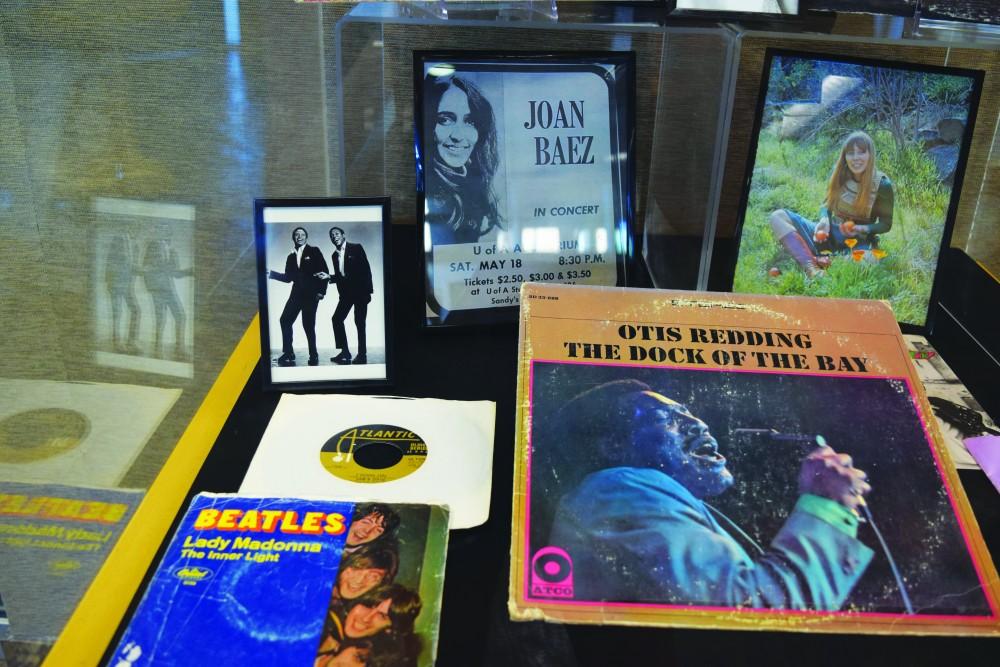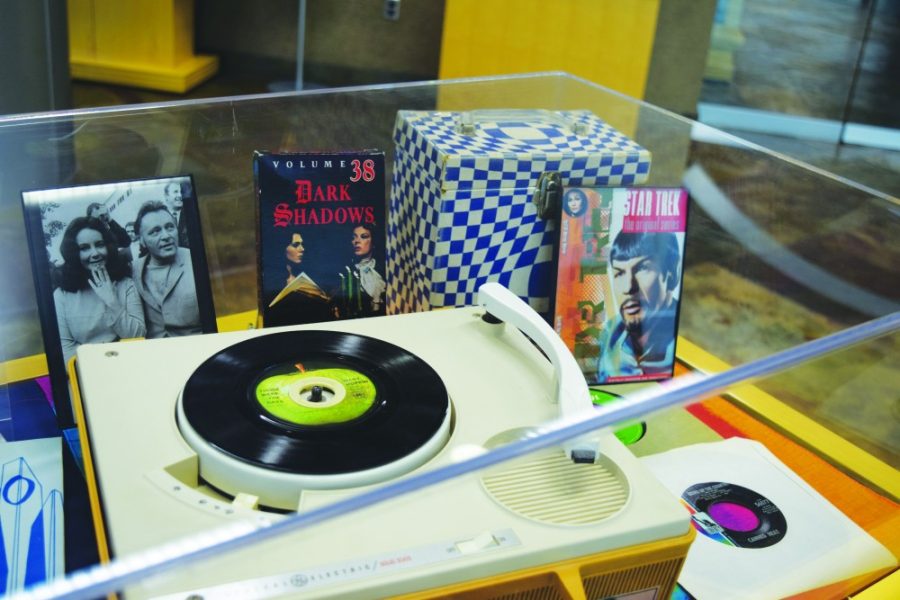The University of Arizona Special Collections Library is known for its access to unique materials that have given Tucson residents an opportunity to explore both the culture and history of the city.
“1968 in America”, curated by associate librarian Bob Diaz, is the newest exhibit in the Special Collections Library, which opened Sept. 4 and is available through Dec. 7.
The exhibit dives into the history of the U.S. 50 years ago, and how 1968 changed the course of America’s future, according to Diaz.
RELATED: UA accapella groups find their sound
“The 1960s, every year you could say something about a unique event or something that happened to keep things moving,” Diaz said. “So that’s the case with the 1960s, but I think ‘68 itself is very, very important because so many things were happening.”
Diaz, who has been a librarian for over 30 years, began work on the exhibit around April and has prepared it with lots of research and dedication to his work. He even included some of his own personal belongings in the exhibit.
“This is a labor of love,” said Diaz, who also said that he is dedicating the exhibit to Aretha Franklin, of whom he has been a lifetime fan.
Diaz said he wants people to ask themselves questions when walking through the exhibit. He said he wants them to continue to look into the parallels between 1968 and today.
“There are a lot of issues embedded in the exhibit that I want people to come away with a sense of curiosity about,” Diaz said.
Diaz also said that he is working with Susan Crane, a history professor at UA, and they have created a project that gets one of Crane’s classes involved.
RELATED: REVIEW: Les Misérables: a musical phenomenon
“What she’s going to have them do is go back home and ask their parents for photographs of 1968, so as a class they can create a 1968 archive of their own,” Diaz said.
The Special Collections Library, where the exhibit is housed, is focused on connecting with UA students and the Tucson community and making an impact on the community, according to Kenya Johnson, the marketing and communications manager at the library.
“I’m just imagining that anyone of any age, of any background can come into this exhibit and find something to connect to, whether you were around in 1968 or not,” Johnson said. “We all looked to Bob to lead that particular process. I think for his background and his passion, not just for the library but for community.”
Kimberly Ramsey, a graduate assistant at Special Collections, helped put the exhibit together, specifically the video within the exhibit which “is more Tucson based.” Her work on the exhibit will show how the city of Tucson was affected, along with students and the UA.

“It was a big time for protests and getting your voice out there and being heard and taking a stand for what you believe in, I think like right now in the current political climate,” Ramsey said. “I want students to come and see, like, ‘no this is normal we should be doing this, we should be getting loud.’”
At the exhibit, people will be able to learn about several aspects of 1968, including pop culture, the Vietnam war, political history and the Civil Rights Movements.
The exhibit also includes two events, which started with “1968: From the My Lai Massacre to Yellow Submarine” on Sept. 6.
The second event, “1968: A closer Look at its Impact”, is a panel discussion, and will be on Oct. 2 at the Special Collections Library.
The exhibit and its events are free and open to the public Monday through Friday, 9 a.m. to 6 p.m.
Follow the Daily Wildcat on Twitter









